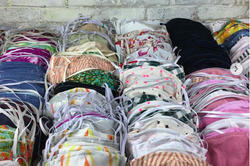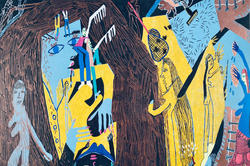RISD makers are helping to address the nationwide shortage of personal protective equipment.
Repurposing Machines to Save Lives
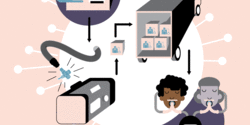
As the spread of COVID-19 escalated rapidly in March, the Rhode Island-based Ventilator Project joined the many ad hoc groups that formed just as quickly to respond to extreme shortages of basic medical equipment and supplies.
Representing a wide range of regional institutions, this collective of doctors, technologists and designers immediately identified the potential for common CPAP and BiPAP machines, which are made to treat sleep apnea, to supplement respiratory equipment urgently needed by critical care providers throughout the US and in less developed countries.
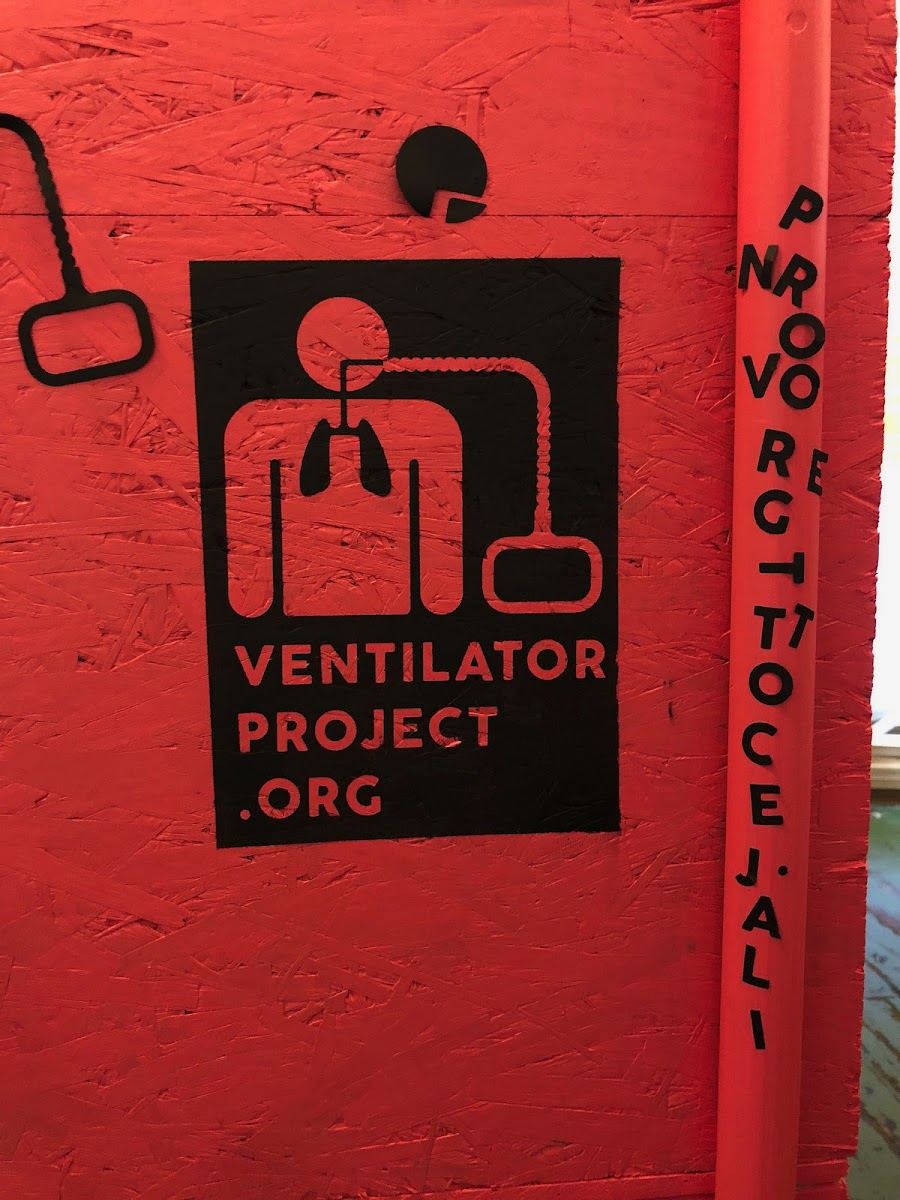
RISD alums Hannah Liongoren MDes 17, Ayako Maruyama 10 ID and Liam Van Vleet 10 ID are among the core Ventilator Project team, which has grown to more than 60 volunteers working to gather, adapt and distribute to hospitals as many unused CPAP/BiPAP units as they can—a surplus they estimate approaches three million—with the urgency that this moment demands.
“Resources like these can save lives—and they’re just sitting on shelves.”
Since the nonprofit launched in mid March, it has connected with doctors and facilities in Southern New England, New York, Colorado and California to efficiently deliver adapted devices where they are needed most, in careful alignment with established medical protocols.
“Resources like these can save lives—and they’re just sitting on shelves,” says Liongoren, whose husband Alex Hornsteinis spearheading an effort in partnership with the Rhode Island Commerce Corporation, the University of Rhode Island (URI) and the state’s department of health (RIDOH).
Liongoren swiftly built an engaging website for the initiative, while Maruyama—who in recent years has taught an Industrial Design studio at RISD called Experience of Public Engagement—has served as a primary communications liaison for the team.
Meanwhile, Van Vleet handled the strategic design of Ventilator Project’s initial, non-public donation drive—a proof of concept that netted dozens of CPAP/BiPAP units and confirmed the team’s capacity to broaden its efforts.
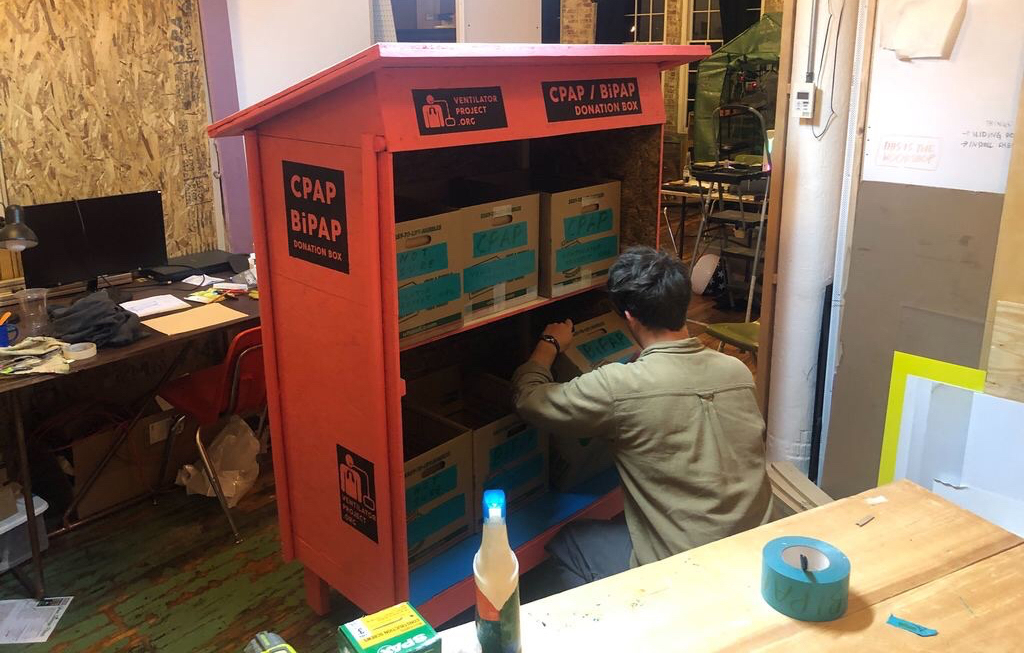
Following a URI press announcement on April 14, Ventilator Project has amassed 400 more machines via a first public call for donations that wraps up on April 30.
In marshaling the team’s wide-ranging expertise so quickly, Maruyama says that establishing a studio culture—even while working remotely—similar to those she’s been part of at RISD has been crucial. “Community, collaboration, sensitivity to different perspectives [and] managing complexity,” she notes, are core RISD values that inform the time-sensitive public health work she’s now engaged in.
“A large part of what a designer does is discover how to bring people together and compel movement toward a clear call to action.”
Similarly, Liongoren sees in the team an ability to untangle complex problems and stay on course in spite of the many challenges. Having focused on adaptive reuse through Interior Architecture’s advanced degree program, she also readily understood the potential of refurbishing older model sleep apnea machines to help treat COVID-19.
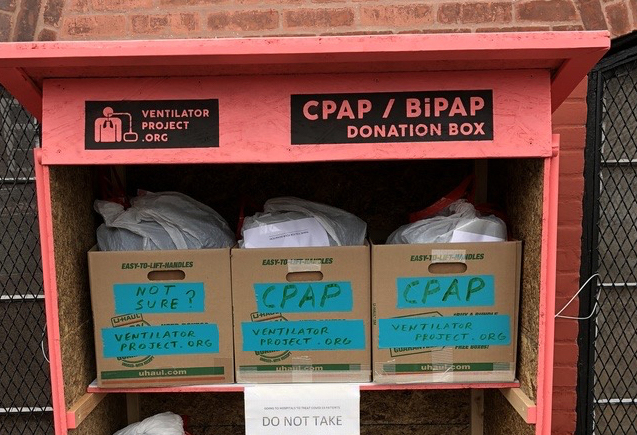
Going forward, Maruyama and Liongoren hope even more members of the RISD community will join the many already pivoting to put their design and problem-solving skills to good use in combatting the pandemic. “A large part of what a designer does,” Maruyama says, “is discover how to bring people together and compel movement toward a clear call to action.”
“What we learn... in the US will inform how we scale... for countries that aren’t as well resourced.”
Liongoren and Maruyama are also deeply driven to refine Ventilator Project’s development and distribution model so that they can help establish it in their home country of The Philippines, where the coronavirus outbreak is giving them insight into the sobering ramifications of the pandemic for developing nations.
“What we learn here right now—in a first-world country like the US—will inform how we scale [Ventilator Project] for countries that aren't as well resourced,” Liongoren says. “Our hearts are very much with that effort.”
—Robert Albanese
Ventilator Project welcomes donations so that it can expand its work to meet urgent needs.
April 29, 2020
